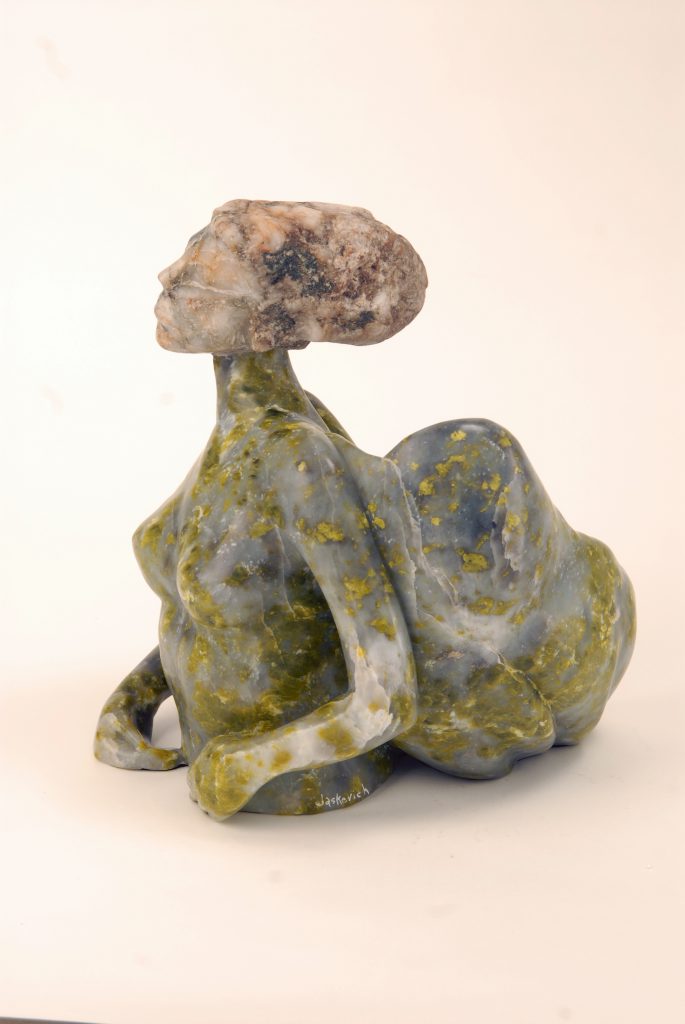Adhesives

Polyester adhesives are used to bond stone to stone, and stone to metal for inside use. Acrylic is used for exterior work. Polyester adhesives that are composed of the resin and catalyst. They are simple to use and provide an inexpensive, permanent, high strength bond. Adhesives should be colored to match the color of the stone you are using. Use acylic paint to color the glue before adding the catalyst. If not colored the glue will tun yellow with age.
The two basic types are:
Knife Grade used for filling cracks and installing mounting rods. The colors are either transparent (not clear, more like a light yellow), and a white. Knife grade has the consistency of room temperature butter.
Flowing Grade used to repair breaks , add two stones together and
( use with mounting rods. (translucent and white). The flowing grade has the consistency of syrup. The white is rather opaque and will not work with semi translucent stones. If buying one type of adhesive, purchase the translucent flowing.These adhesives polish up just like stone.
Do a test of it your first time. Use it in a well-ventilated area. Wear disposable plastic gloves. Have several damp paper towels handy to wipe up a mess off the sculpture. Have plastic spoon or something disposable handy to mix and apply the glue.
Take about a tablespoon full of the resin put it onto a piece of white paper. Use a decent paper, not newspaper as it will pick up the print and soak into the paper fast. You can also put it onto glass or ceramic tile if you wish. Add acrylic colors to match your stone. Once you have the color perfect then add the catalyst. Knead your catalyst
( hardener), take the cap off and squeeze out about a ¼” length right onto the resin. Mix it well and fold it onto itself for about 45 seconds to a minute. Since this is only a test let it sit. As it hardens it will turn from a melted room temperature butter consistency to a rubber consistency in about 2-3 minutes. In 4-5 minutes it will be hard and start to cure. The speed at which it hardens will depend on the amount of catalyst mixed into it. This is an important phase because this it the time during an actual installation or repair that you want to do your clean up of any excess. Clean up excess with damp paper towels. DO not try to wipe up or cut away the excess adhesive until it is rubbery or you will just make a big mess. A swab and acetone will clean up excess adhesive streaking. See the directions as to total time needed to harden usually 30 minutes.
Another interesting use of these adhesives is as an inlay for stone. A flat portion of the stone can be carved into and filled with single or multi-color adhesive.
Polyester adhesives are a simple, fast and strong material for repairing breaks in stone, filling voids, and bonding rods and turning pins into finished works as well as bases.
A good supplier for adhesives is B B Industries  in Knoxville Tennessee (Tenax adhesives) 800-575-4401 http://bbindustriesllc..com